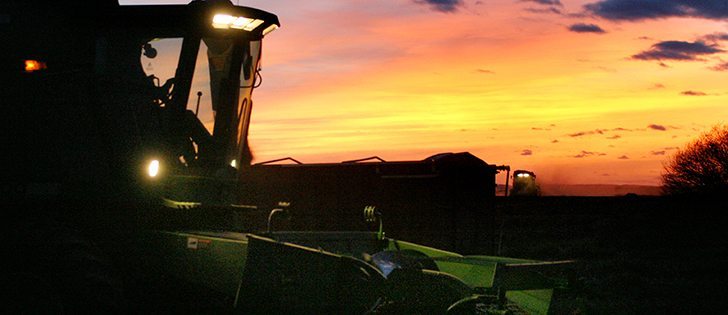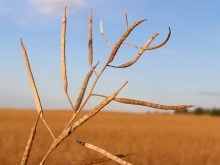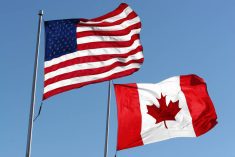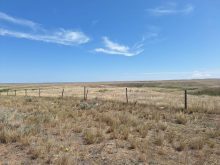Could prove disastrous | It’s not a sure thing but conditions are right
Farmers’ worst fears may be realized this fall.
Weather forecasters are calling for an early frost, which could cause massive downgrading for what is shaping up to be an above-average although significantly delayed crop.
“I do think we are going to see an earlier-than-normal frost and freeze across many parts of the region, even though September is still going to be fairly mild,” said Brett Anderson, senior meteorologist with AccuWeather.
He thinks a couple of strong high pressure systems will descend from the north in early September, leading to clear skies and light winds.
Read Also

Why feds imposed EV tariffs
Moe and Kinew have a fight on their hands when it comes to eliminating the EV tariff. Canada has to worry about pissing off the U.S. and Mexico and hundreds of thousands of auto workers.
“We could see the patterns setting up where we could see some cold nights with some frost or freezing a little bit earlier, perhaps as much as a week earlier, than normal across parts of the southern prairie region, especially for Saskatchewan and into Manitoba,” said Anderson.
The normal fall frost period for most of Saskatchewan is Sept. 9-15, according to a 30-year average compiled by the Saskatchewan Crop Insurance Corp.
A killing frost would have devastating consequences for a crop that is 10 days to two weeks behind normal development.
Drew Lerner, president of World Weather Inc., is also forecasting an early frost.
Three separate weather patterns are “more or less in agreement” that the first week to 10 days of September is the most favoured period for a frost scare in Western Canada.
“It doesn’t mean that there will be a freeze. It doesn’t mean there will be a frost. But it does mean that that’s the next opportunity for a threat of such conditions,” he said.
Arlynn Kurtz, vice-president of the Agricultural Producers Association of Saskatchewan, said an early frost could be a devastating blow for the province’s growers.
“If we get a frost the first week in September, I think 50 percent of the crops are at risk,” he said.
Canola and flax crops would be particularly vulnerable in eastern Saskatchewan, where Kurtz farms. Growers seeded oilseeds later than usual this year, partially in response to their experience in 2012 when late-seeded canola fared better than the earlier crops because it avoided aster yellows damage.
Growers in his area have dealt with two years of lost acres because of flooding, so they are counting on getting this year’s above-average crop in the bin.
“It would be a tragic situation if we got a frost this year that damaged the crops,” said Kurtz.
Anderson said one mitigating factor is that there is ample soil moisture, which tends to trap heat. As a result, his best guess is that frost damage would be fairly minimal, but he added that it is exceptionally difficult to predict how low temperatures will drop and for how long.
AccuWeather is forecasting a warmer-than-normal September across much of the southern Prairies, so while the nights may be cool the days will be hot.
Kurtz thinks that would be a recipe for disaster.
“If it freezes over night and you get hot sun the next day, it seems to affect the plants more than if you get frost and it happens to stay cloudy and cool all the next day,” he said.
He also worries about the dense crop canopy.
“I wonder how much heat will radiate up from the soil to the pods or the heads.”
He is hoping for 25 millimetres of rain to speed crop development.
Anderson said September will likely be warmer and drier than normal for much of the Prairies, but the weather pattern will then shift.
“We do believe there’s going to be more shots of arctic air coming down across the prairie region, so we do predict below normal temperatures across much of the prairie region for October and November,” he said.
There are no strong signals on precipitation for the remainder of the fall, so AccuWeather is sticking with near normal moisture conditions for October and November in the southern half of the Prairies. However, there are signs that Alberta could be in store for more than its usual amount of snow in November.
“We still don’t have too much of an idea on the winter yet,” said Anderson.
“It’s still a little bit early, but initial clues that we’re looking at are pointing to a slightly colder-than-normal winter across the prairie region.”
















